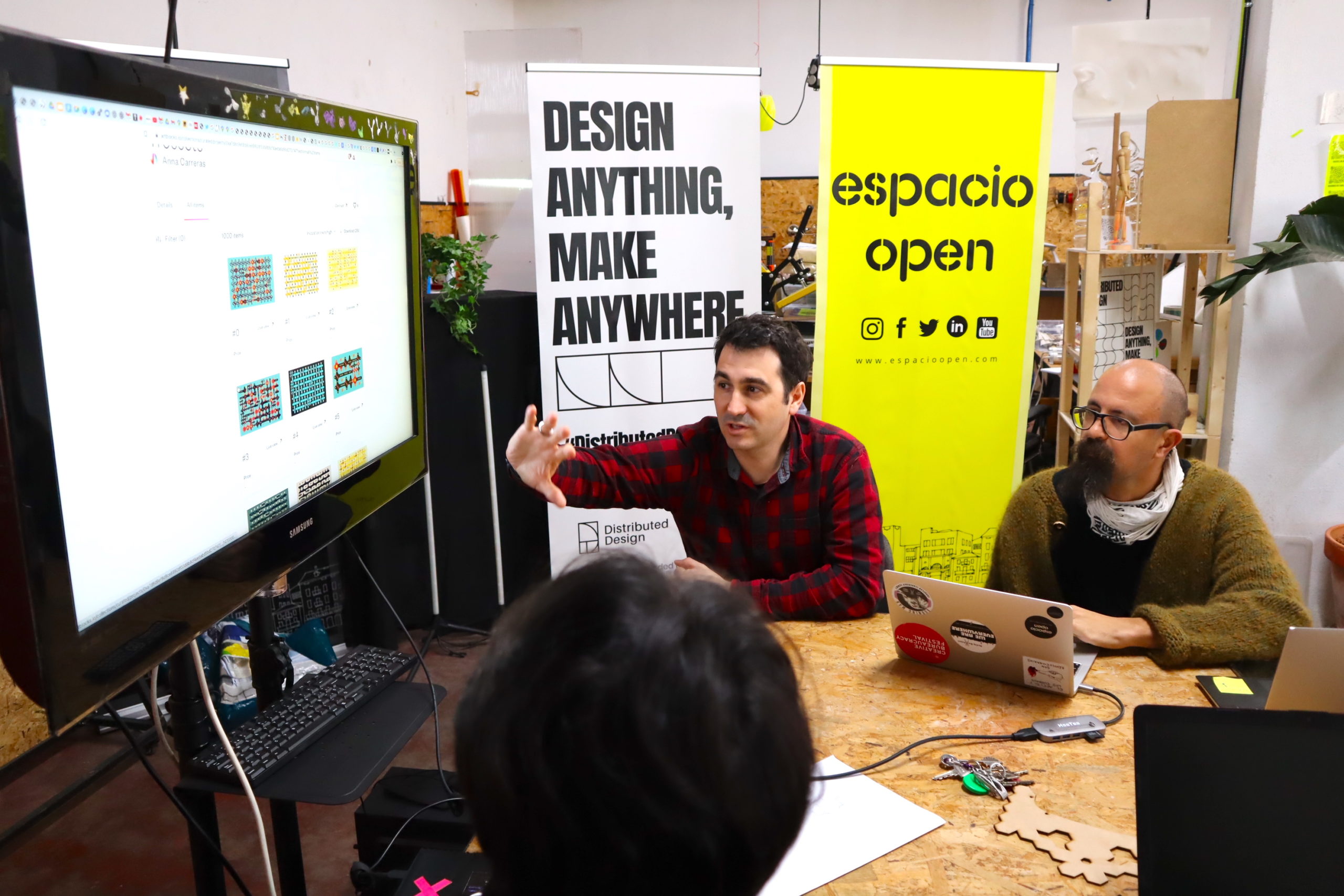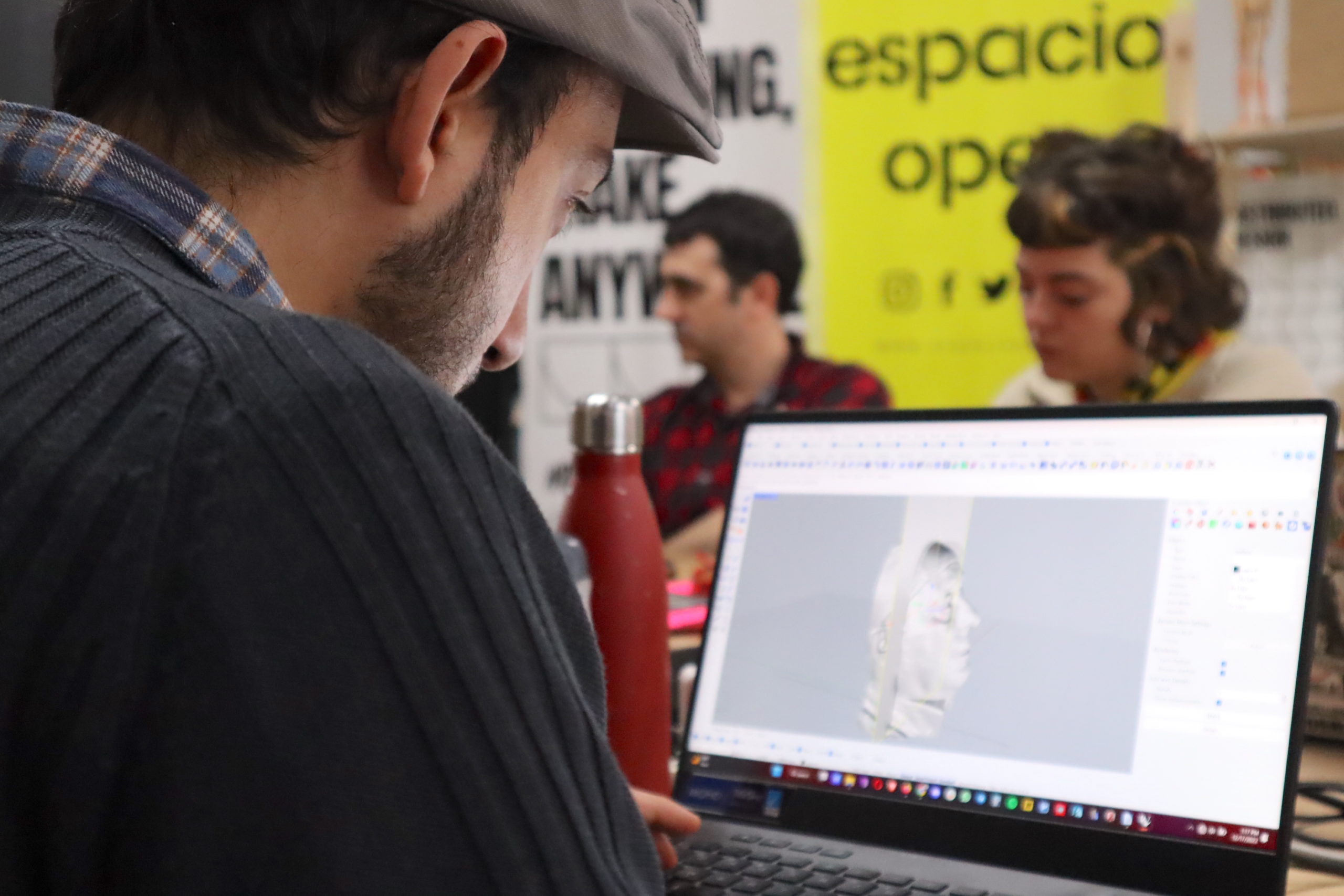We tend to judge emerging technologies as something good or bad, but it is more about trying to understand how they collide with our values and which opportunities to solve real problems could be tackled with them. A good example of this are the blockchain technologies and some of their most notorious practical applications, cryptocurrencies and non-fungible tokens (NFTs).
Since the beginning, the use of these technologies to finance creative, social and artistic projects has been on the table, but the excessive use of energy and the hiper speculative environment that surrounds cryptocurrencies pushed away a whole generation of creative technologists. Due to these concerns, it is understandable that the open source movement, Fab Labs and maker communities have turned their back to possible uses of blockchain in hardware-based physical projects. But this left unexplored many lines of work to finance open source communities and democratise access to advanced technologies.
In art and intellectual property, blockchain can be used to securely track the ownership and provenance of art, music and other forms of intellectual property, making it easier to manage rights and royalties. This technology can be used to increase transparency in transactions and also allows for new forms of experimental governance such as decentralised organisations.
The Processing Foundation, for example, received 10 million euros in 2021, mostly from cryptocurrency donations by artists using the creative software processing. This foundation supports artists, students and educators developing and distributing open source software projects, specially focused on promoting software literacy within arts communities. This amount of money meant an unprecedented financial stability for the organization, and has allowed it to increase grants and support programmes for its whole ecosystem of creators and educators.
But, can blockchain technologies such as non-fungible tokens be applied with ethical and environmental perspective to physical objects to finance distributed design projects? In the Blockchain Maker to Market Bootcamp, we helped eight emerging creatives learn how to use non-specialists tools to digitalise their value proposals. During the workshop, participants learned the evolution and state of the art of these emerging technologies with a critical perspective, and explored the possibilities they offer to the unsolved challenge of finding new ways to finance creative projects.

Exploring the evolution and practical applications of blockchain in art
The workshop started with an introduction to blockchain technology and the NFT. As Mar Canet explained to the participants, a non-fungible token is a unique, verifiable asset that exists only in the digital realm and can be purchased and sold like any other property, despite having no tangible form of its own. This technology enables true ownership of a digital asset or good, like a picture, a song or a videogame. Also, NFT contracts can include clauses that allow a more ethical remuneration of individual and collective work, such as automatically giving a percentage to the artists every time their work is resold.
That is why many emerging and established artists in the new media arts scene found in NFTs a way to finance their work. But, at the same time, the issue around the sustainability of blockchain procedures (the massive amount of energy required for each transaction) created a debate around the ethical implications of participating in the new NFT hype. As a response to this concern, in 2018 emerged Tezos, an open source blockchain, and its marketplace objkt, that have become the standard home of the New Media Art scene. This technology has changed its validation mechanism from proof of work to proof of stake, replacing the complex mathematical calculations by a process of p2p validation that limits very significantly the energy required.
After diving into the evolution, possibilities and concerns related to this technology, the workshop participants went into practice and learned how to use objkt, Tezos’ marketplace. To interact with NFT marketplaces, participants created a crypto wallet, and then started to explore and understand the dynamics of this platform, which has become the largest digital art marketplace on Tezos to buy, sell and create NFTs.
Nowadays, the field of blockchain technologies is quite new and its evolution is still ongoing. The key is to think of these tools as something that can be explored to find new solutions for one of the main issues of the open source movement, the lack of economic structures for supporting the main contributors (all the people that openly share their designs, code and tutorials). It is clearly easier to apply blockchain and cryptocurrencies to software than to physical objects, but this road is yet to be defined and explored. One advantage of using crypto assets to get financial support is that the open source principles are already well known and supported in this environment, so they may achieve greater acceptance than in other fields.
Time will tell in what measure the crypto ecosystem has benefited the open source world. Hopefully, a new generation of blockchain based projects will be less centered on speculation and more focused on trying to solve real challenges and social needs.

The creative professionals that participated in the workshop were:
Yerwant Megurditchian
After working for 7 years as an architect in Los Angeles, Yerwant Megurditchian moved to Barcelona last year to study a Master’s degree in Advanced Architecture. At IAAC, the Institute for Advanced Architecture of Catalonia, he is conducting research on 3D-printed modular clay façades based on principles of energy sustainability and thermal comfort. His interest in the world of blockchain is to explore its possibilities to apply fab city lab production models, facilitating a global distribution of digital objects that can be manufactured locally.
Idoia Hormaza de Prada
Idoia Hormaza de Prada works in the field of visual arts from many facets: teaching, researching, organizing cultural events and creating content for specialized media. She is currently doing a thesis focused on ecological arts, science, technology and philosophy at the Faculty of Fine Arts of the Complutense University of Madrid. Her interest in the Blockchain Cryptofunding Digital Commons workshop was focused on better understanding the impact and possibilities of NFT in the world of art, as a means of creation and also of financing creative productions.
Ricardo Mutuberria
BIOOK is a non-profit association that promotes open and citizen science through the development of content and tools for all kinds of audiences. The project aims to promote scientific culture and boost interest in STEAM, especially among the youngest. Ricardo Mutuberria, biohacker, founder and director of Biook, participated in the Blockchain Cryptofunding Digital Commons workshop to better understand the potential of these technologies in the field of education and open science.
Irene Ferrer
Irene Ferrer is an engineering student of Industrial Design and Fine Arts, and product designer at Jetclay, an open source platform that explores the world of 3D printing and ceramics. Her objective is to work on projects with a social focus “that invite us to rethink and build a reality beyond the consumption cycles”. Irene Ferrer participated in the Blockchain Cryptofunding Digital Commons workshop with the aim of exploring NFTs as a tool to finance social and environmental projects. “I would like to carry out hybrid projects between digital art and the physical world”.
Rachad Salem
Rachad Salem is co-founder of Godot Studio, a computational design, digital fabrication and craft studio. He also works as a computational designer and digital maker at Lowpoly, a project that offers companies the possibility of turning all kinds of ideas into products through 3D printing. Rachad Salem’s work is focused on exploring the limits of additive manufacturing, devising new solutions. As part of his research, he is developing an NFT project for ceramic 3D printing.
Ferdinand Meier
Ferdinand Meier is a mechanical engineer. After several years in the automotive and aerospace world at MTU Aero Engines, INNOMED GmbH and IGEL AG for BMW, he made a career turn into the world of open source digital manufacturing. He has worked in fab labs all across Europe as laboratory manager, scientific collaborator and instructor. Currently, he is developing different projects related to free technologies within Fab Lab Bilbao.
Mónica Pinto Sanz
Mónica Pinto Sanz is a design student at Design Academy Eindhoven. She is interested in the world of crafts, ceramics and how to use these practices to create multigenerational and open meeting points. Mónica took part in the Blockchain Cryptofunding Digital Commons workshop motivated by the interest in learning new media and creation tools.
Alfredo Blasco Nuin
After working for several decades in the world of communication as a journalist, Alfredo Blasco Nuin made a professional turn to dedicate himself to the field of conceptual art, photography and illustration. He currently has the Recycling Robots upcycling project, an initiative where he uses discarded materials to create new robotic sculptures.
–
Mar Canet
The workshop was led by Mar Canet, an artist specialized in digital media. As part of the artist duo Varvara&Mar, he has been working since 2009 in art projects that explore the social impact of the technological age. Mar Canet especially focuses his artistic research around artificial intelligence, kinetics, participation and digital fabrication, integral parts of their work. During the last few years, Varvara&Mar have carried out research projects on the critical use of NFT for the art world. One of them is NFT Shop, an installation created for the urban festival UIT, that took place in Estonia in 2021. The artists turned an abandoned gas station into a NFT shop, creating a physical gallery and a meeting place where artists could sell their digital art and start conversations over a cup of coffee about the hot topics of NFT and cryptocurrencies.
The artist duo have exhibited their artworks at various international shows and festivals. Varvara&Mar has exhibited at MAD in New York, FACT in Liverpool, Santa Monica in Barcelona, Barbican and V&A Museum in London, Onassis Cultural Center in Athens, Ars Electronica museum in Linz and ZKM in Karlsruhe, among others. Mar Canet is a PhD candidate in BFM at Tallinn University and a researcher at Cudan Open Lab. He has two degrees: in art and design from ESDI in Barcelona and in computer game development from Central Lancashire University in the UK. United. He also obtained a Master’s degree in Interface Cultures at the Linz University of Art and Design. On top of that, he is a co-founder of Derivart and Lummo.
Story by Espacio Open
